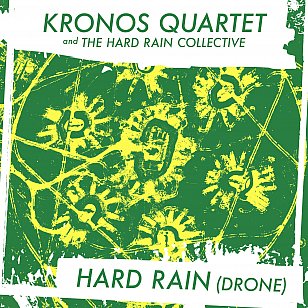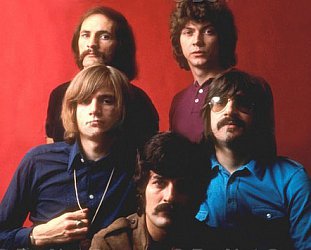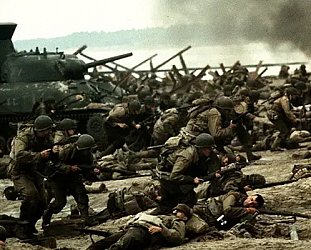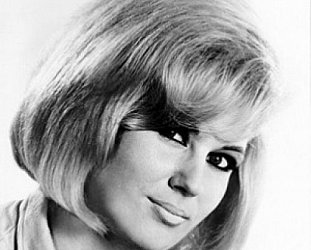Graham Reid | | 2 min read

On August 5 1945, the Japanese city of Hiroshima was destroyed by the world's first atomic bomb used in a military context.
Three days later Nagasaki was hit.
The Manhattan Project had become an awful reality, at the cost of over 200,000 lives in an instant, mostly civilians.
It was a “lest we forget” moment for the planet.
But some did forget. Immediately.
The American military and then the Russians revved up their atomic capabilities to the point of mutually assured destruction (MAD) should one or the other use a bomb in that Cold War era.
As Annie Jacobsen recounts in her recent, chilling Nuclear War: A Scenario in which she first does the maths on just how many atomic bombs suddenly sprouted up in the US between 1946 and 1952: a terrifying 841.
No wonder people dug fallout shelters in their gardens in the Fifties and the world held its breath during the Cuban Missile Crisis in October 1962 when brinkmanship became a potentially fatal game of who might not blink.
Two months later Bob Dylan recorded his bleak A Hard Rain's Gonna Fall which included lines like “I’ve stepped in the middle of seven sad forests, I’ve been out in front of a dozen dead oceans, I’ve been ten thousand miles in the mouth of a graveyard and it’s a hard, and it’s a hard, it’s a hard, and it’s a hard . . . it’s a hard rain’s a-gonna fall”.
It was a vision of a post-apocalyptic world, a blighted landscape of poisoned waters and “where black is the colour and none is the number”.
A Hard Rain's A-Gonna Fall (1963)
Three years later Steve Reich recorded the sound of a preacher in Union Square, took the tape home and put the same spliced piece on two tape recorders and pushed play.
The voice at first in synch gradually went out and so there was an eerie Doppler effect. The phrase he chose was “it's gonna rain”. It sounds scary.
And John Lennon wrote the following year, 1966, "when the rains come they run and hide their heads, they might as well be dead”.
Rain, June '66. B-side Paperback Writer single
Now, the Reich and Lennon came from different consciousnesses and had very different meanings, but the image of rain is prevalent in songs and poems: it can be benign as in Lovin' Spoonful's delightful Rain on the Roof or When the Rains Came on Van Morrison's excellent new album Remembering Now: “When the rains came, seemed to give me peace of mind”.
When the Rains Came
Or it can be loaded with fatalism as in Dylan's lyric.
This year the Kronos Quartet -- on the 80th anniversary of the first test of an atomic bomb on July 16 – released two versions of Dylan's song.
The first version, Hard Rain, features Iggy Pop, Willie Nelson, Allison Russell, Deerhoof’s Satomi Matsuzaki, the Magnetic Fields’ Stephin Merritt, Tanya Tagaq, Laurie Anderson, Slowspin, and others.
Kronos Quartet provided the musical accompaniment alongside members of Belle & Sebastian, Deerhoof, Patti Smith’s band, and a backing choir that included Frankie Cosmos’ Greta Kline and Xenia Rubinos.
Hard Rain
The other version is Hard Rain (Drone), a spoken-word take on Dylan’s original, with contributions from, among others, Matsuzaki, Merritt, Anderson, Pop, Nelson, Ringo Starr, Ocean Vuong, Sampa the Great, Sleaford Mods, Pussy Riot’s Nadya Tolokonnikova, Rage Against the Machine’s Tom Morello, Charlotte Gainsbourg, and, as a member of the instrumental ensemble, Shahzad Ismaily.
Hard Rain (Drone)
Take a moment to think about the rain.
And what, in a worst case scenario, could rain down.
.
.





Raloh - Jul 17, 2025
That Nuclear War book is so devastating and realistically possible. Knocked me for six
Savepost a comment